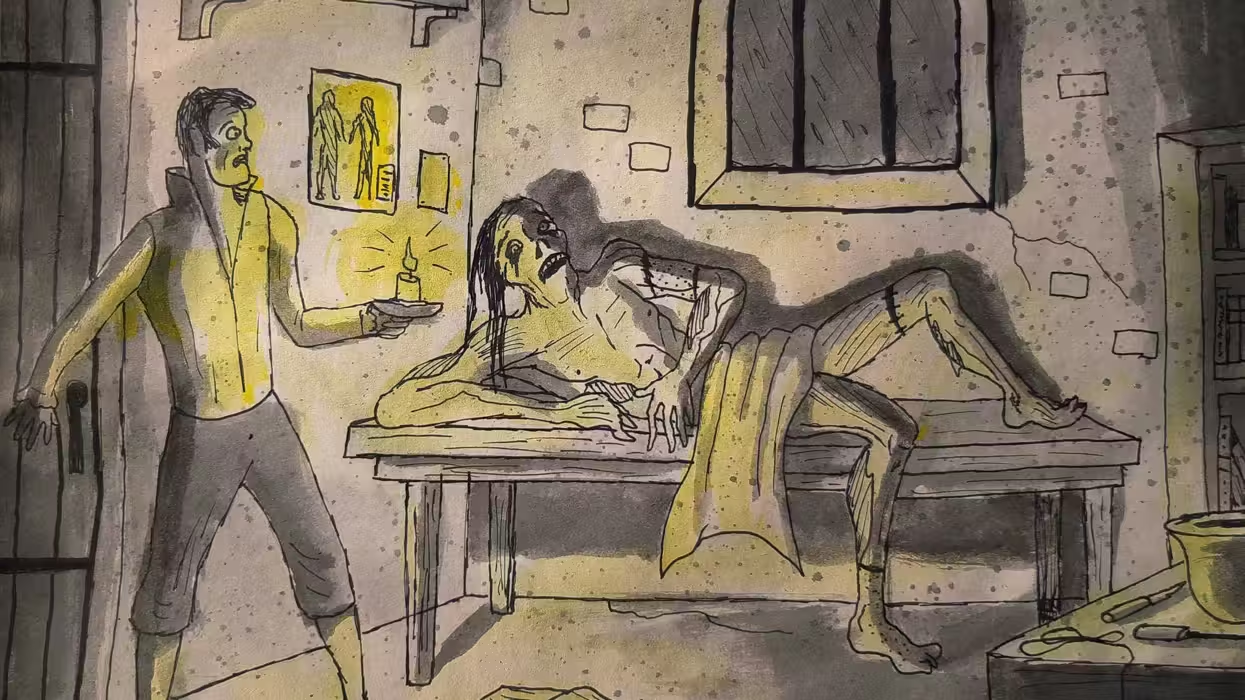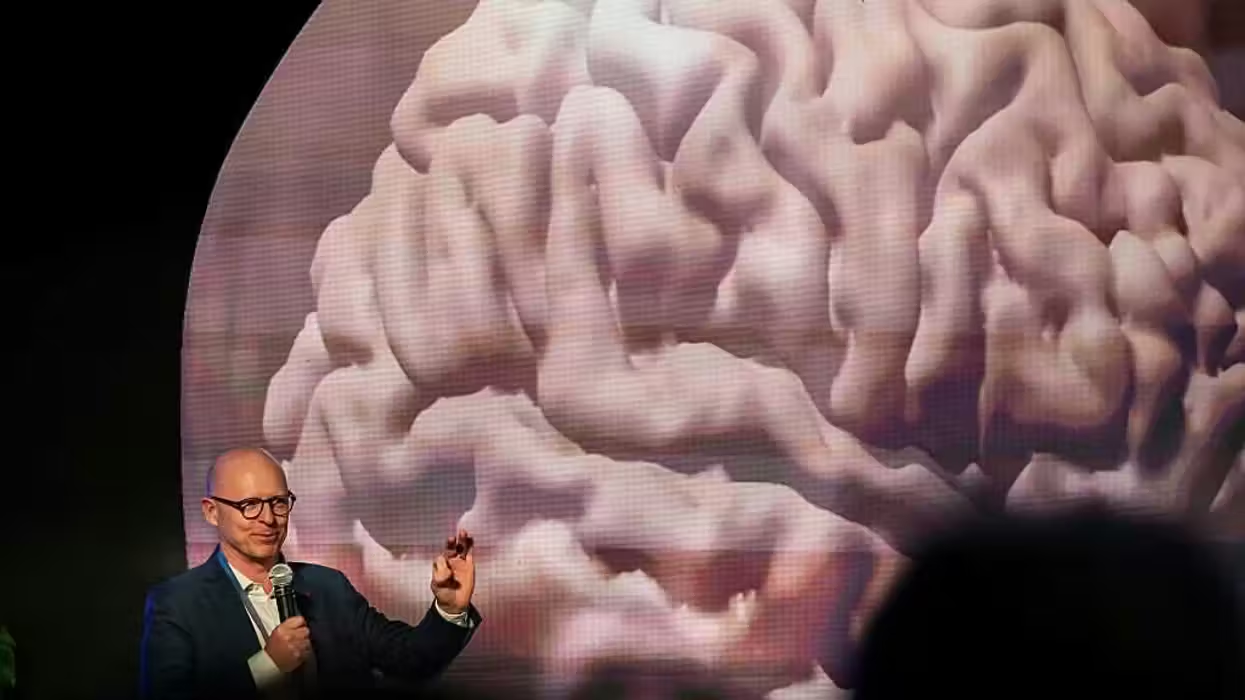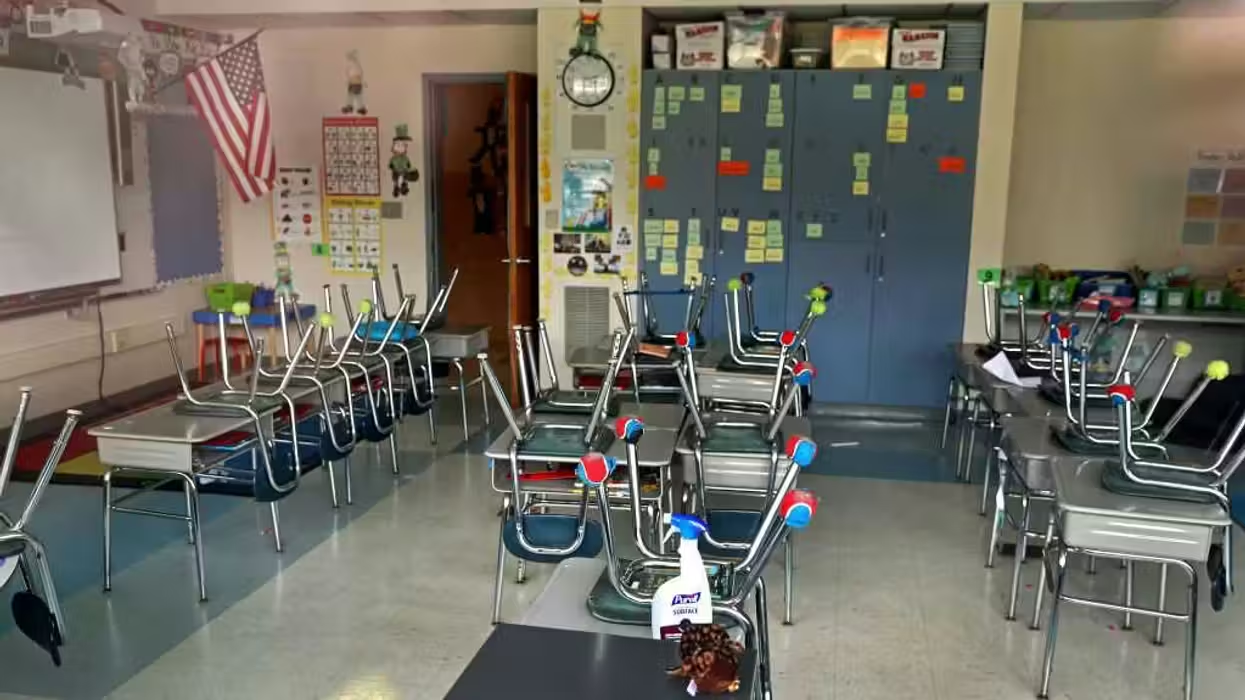To call it an oversize load is an understatement.
 A fifty-foot wide electromagnet begins its 3,200 hundred mile journey from the Brookhaven National Laboratory in Upton, New York, to the U.S. Department of Energy's Fermi National Accelerator Laboratory in Batavia, Ill., Saturday, June 22, 2103. The electromagnet, which weighs at least 15 tons, was the largest in the world when it was built by scientists at Brookhaven in the 1990s is no longer needed at the laboratory on New York s Long Island, so it is being moved to the Fermi laboratory, where it will be used in a new experiment called Muon g-2. (Photo: AP/Newsday, Heather Walsh)
A fifty-foot wide electromagnet begins its 3,200 hundred mile journey from the Brookhaven National Laboratory in Upton, New York, to the U.S. Department of Energy's Fermi National Accelerator Laboratory in Batavia, Ill., Saturday, June 22, 2103. The electromagnet, which weighs at least 15 tons, was the largest in the world when it was built by scientists at Brookhaven in the 1990s is no longer needed at the laboratory on New York s Long Island, so it is being moved to the Fermi laboratory, where it will be used in a new experiment called Muon g-2. (Photo: AP/Newsday, Heather Walsh)
Over the weekend, the huge undertaking of moving a 50-foot wide, 17-ton electromagnet from Long Island to Chicago began.
The component is part of particle physics experiments and is being moved from the Department of Energy's Brookhaven National Laboratory to Fermi National Accelerator Laboratory.
The magnet for the Muon g-2 project began its move on June 22 and although you might be wondering just how many roads they would have to shut down to let the huge piece of scientific equipment pass through the several states it would take to get there, the answer might surprise you.
Not many.
It was moved to the front gate of Brookhaven's campus -- about 1.8 miles. Then traveled along the William Floyd Parkway to Smith Point Park -- 6 miles. And was loaded up onto a barge where it will complete the longest legs of its total 3,200-mile journey, expected to take five weeks, by sea.
Watch the magnet on the move on Brookhaven's property:
Here is the magnet traveling offsite in the evening hours:
It will travel down the East Coast, around Florida and up the Mississippi, Illinois and Des Plaines rivers. You can watch its progress along the route in real time.
 Map showing the magnet for the Muon G-2 project's location as of Thursday afternoon and the trail of its planned route. (Image: FNAL.gov)
Map showing the magnet for the Muon G-2 project's location as of Thursday afternoon and the trail of its planned route. (Image: FNAL.gov)
The magnet made it safely for the first part of its land portion of the trip onto the barge and set off Tuesday. Watch it being lifted and loaded up:
In late July, the magnet will be placed back on a truck, where a two-day trip to the Fermilab will complete the journey. Law enforcement will conduct "rolling roadblocks" for the magnet's final overland journey.
Once at Fermilab the equipment will help scientists study properties of muons, subatomic particles that live only 2.2 millionths of a second and could create new discoveries in the realm of particle physics.
And if you're wondering about some of the magnetic properties of the equipment impacting things around it, not to worry. The magnet will remain inert, exhibiting no magnetic properties, until it is plugged in at Fermilab.
Crews have to take extra care moving it though. Chris Polly, manager of the Muon g-2 project at Fermilab, said earlier this month that the aluminum-steel ring with superconducting coils inside cannot be taken apart or twisted more than about 1/8th of an inch without irreparably damaging the coils.
But its still exciting for the labs and the community at large.
“It’s not often our neighbors get a ringside seat for something this complex and interesting," Polly said in a statement.
The Associated Press contributed to this report.
--
[related]

 A fifty-foot wide electromagnet begins its 3,200 hundred mile journey from the Brookhaven National Laboratory in Upton, New York, to the U.S. Department of Energy's Fermi National Accelerator Laboratory in Batavia, Ill., Saturday, June 22, 2103. The electromagnet, which weighs at least 15 tons, was the largest in the world when it was built by scientists at Brookhaven in the 1990s is no longer needed at the laboratory on New York s Long Island, so it is being moved to the Fermi laboratory, where it will be used in a new experiment called Muon g-2. (Photo: AP/Newsday, Heather Walsh)
A fifty-foot wide electromagnet begins its 3,200 hundred mile journey from the Brookhaven National Laboratory in Upton, New York, to the U.S. Department of Energy's Fermi National Accelerator Laboratory in Batavia, Ill., Saturday, June 22, 2103. The electromagnet, which weighs at least 15 tons, was the largest in the world when it was built by scientists at Brookhaven in the 1990s is no longer needed at the laboratory on New York s Long Island, so it is being moved to the Fermi laboratory, where it will be used in a new experiment called Muon g-2. (Photo: AP/Newsday, Heather Walsh)





